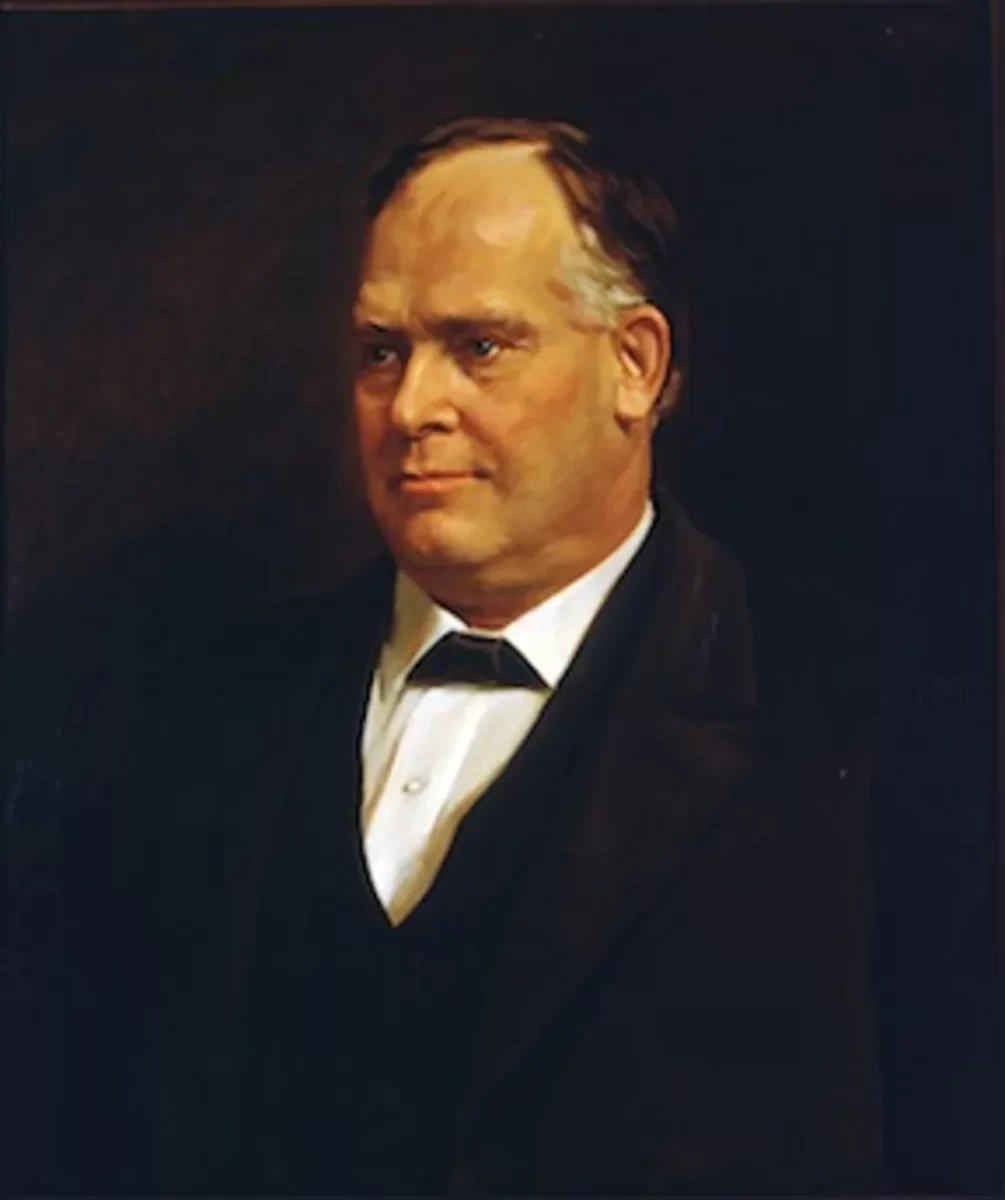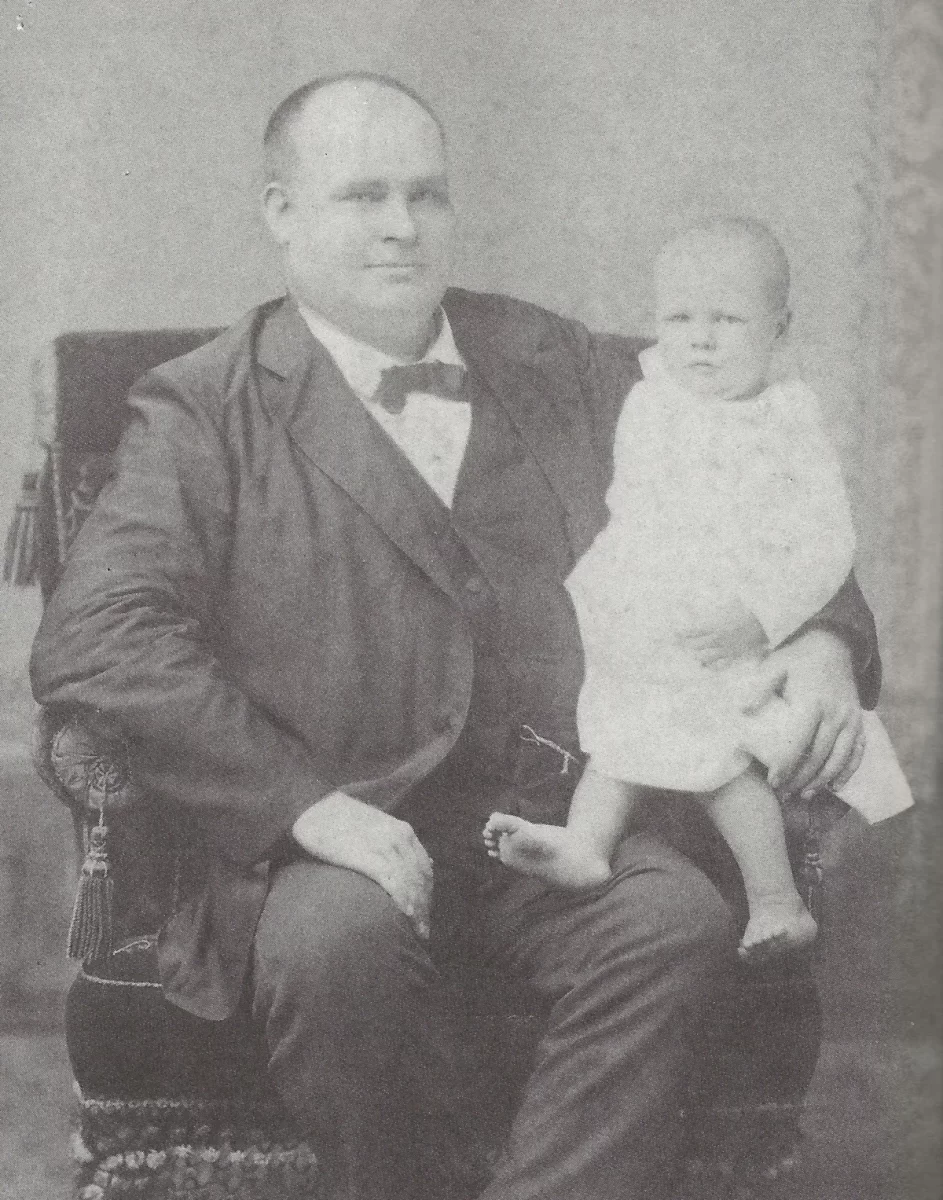![]()
By Tracy Gupton
Former Texas Governor James Stephen Hogg was born on this day 173 years ago. His connection to West Columbia did not occur until after he left the Governor’s Mansion in Austin when he purchased the former Martin Varner-Columbus Patton plantation in 1901.
“Big Jim” Hogg was often referred to as “the people’s governor” in the 1890s, but he is remembered most for being both the youngest man elected governor of the Lone Star State as well as the first Texas governor who was born in the state.
James Stephen Hogg was born on March 24, 1851, on a 2,500-acre plantation called Mountain Home in Cherokee County, Texas. His father, Confederate General Joseph Lewis Hogg, was killed in battle in Mississippi in 1862 during the Civil War when Jim was only 11. Both his mother, Lucanda McMath Hogg, and his youngest brother Richard died the following year when Jim was 12 and Richard only six years old.
Left to raise Jim was his 28-year-old widowed sister, Martha Frances Hogg Davis, 24-year-old sister, Julia Ann, and 21-year-old brother, Thomas Elisha Hogg. The older siblings also had 15-year-old John Washington Hogg, 9-year-old Joseph Lewis Hogg Jr. and 12-year-old Jim to look after once both parents had passed away.
The future governor of Texas grew up fast. By the time he was 16, Jim Hogg was working as a typesetter for a Rusk, Texas, newspaper which was located about two miles from his home. In 1868, at 17, Jim took a job on the Quitman Clipper newspaper, over 70 miles away from Rusk in the Wood County small town of Quitman, and later worked for the Palestine Advocate and the Cleburne Chronicle.

A portrait of James Stephen Hogg, the 20th governor of the great state of Texas
Before he was 20, Jim Hogg had moved to Tyler, Texas, where he began studying law while working for the Tyler Democrat-Reporter newspaper. Despite losing both parents and a younger brother when he was only a child himself, Jim’s own life nearly ended long before he reached the heights of success in both politics and business.
Michael Bailey, current curator of the Columbia Historical Museum in West Columbia, has portrayed Governor Hogg many times over the years at reenactments of historical events around Brazoria County and especially at the Varner-Hogg Plantation state historic site in West Columbia. Bailey said that Governor Hogg “was as tough as they came,” when pointing out that the former owner of the land where the state park now exists nearly died as a young man.
“He was shot six times,” Bailey said, adding that Jim Hogg survived the attempt on his life.
In the book, “The Hoggs of Texas: Letters and Memoirs of an Extraordinary Family, 1887-1906,” Virginia Bernhard writes that Jim Hogg “was shot in the back by a vengeful outlaw whom Jim had crossed” and nearly died from his severe wounds.
A large man, Jim Hogg stood 6’3” and weighed nearly 300 pounds when he reached adulthood. His constant battles with obesity would lead to health issues later in life and his eventual death three weeks before he could celebrate his 55th birthday.
He was only 20 years old when he started his own newspaper, The Longview News, in Gregg County, Texas. Political pursuits and practicing law would soon replace his journalistic endeavors though. At the extremely young age of 22, Jim Hogg won his first election as a Wood County justice of the peace in Quitman where he had moved his newspaper to from Longview.
He married Sarah Ann “Sallie” Stinson when he was 23 and passed the bar exam at 24, which eventually led to Jim Hogg being elected county attorney of Wood County at the age of 27. At 29 he was elected district attorney for the 7th District with headquarters in Tyler.
Jim continued that trend of setting impressive goals and then achieving them when he won election to the state’s attorney general’s office in 1886 when he was only 35. And in 1890, after serving two terms as Texas attorney general, Jim Hogg became the first Texas-born governor of our great state. He was only 39 years old, the youngest to ever be elected governor in Texas.
Bernhard writes in her book on the Hogg family that James Stephen Hogg was “a masterly politician and a charismatic speaker.” She goes on to say in her book that Jim, “became a force to reckon with in state and national politics. One historian called him the state’s ‘last people’s governor of Texas – perhaps the only one.’”
When he first took office as Texas’s 20th governor, Jim Hogg was the father of four children: eldest son Will was 15, daughter Ima was eight, Mike was five and Tom was three. His wife Sallie was in poor health through much of his two terms as Texas governor and was diagnosed with tuberculosis in the summer of 1895.

Photo courtesy the Dolph Briscoe Center for American History, the University of Texas at Austin
Future Texas Governor James Stephen Hogg posing for a photograph with his daughter Ima, circa 1883
Sallie Hogg was only 41 when she died September 21, 1895, with her husband and children at her bedside. The tragic death of his wife would send Jim Hogg into private life as a widower after leaving the governor’s office in 1895.
Robert Cotner writes in his 1952 biography of Governor Hogg that, “without any real difficulty Hogg could have become a United States senator in 1896, but he was content to return to private practice. Though he was in debt when he relinquished the governor’s chair to his attorney general, Charles A. Culberson, Hogg was able to build up a sizable family fortune by his law practice and wise investments in city property and oil lands.
“After the oil boom at Beaumont and a trip to England in connection with his expanding business interests in South Texas, Hogg gave up his partnership with Judge James H. Robertson in Austin and moved to Houston, where he formed the firm of Hogg, Watkins and Jones,” Cotner wrote in his Hogg biography. “He continued his political interests but was hurt in a railroad accident, after which he was never well again.”
Bernhard wrote in “The Hoggs of Texas” that Governor Hogg “set out to harness the railroads and corporations that were operating in Texas and make them subject to state regulations. The Railroad Commission, established (by Governor Hogg) in 1891, was his proudest achievement.”
The early 1900s saw the former governor spend part of his time in West Columbia while still practicing law in Houston. Bernhard wrote in her 2013 book on the Hogg family, published by the Texas State Historical Association, that Jim Hogg got involved with the first big oil boom in Texas at Spindletop near Beaumont and was one of the founders of the Texas Company. “Hogg’s oil syndicate merged profitably with J.S. Cullinan’s Texas Fuel Company (later to be known as Texaco), and for a time the former governor reveled in his newfound affluence. There were happy times at “the Varner,” a Brazoria County plantation he had bought because he believed there was oil under the land. (He was right, but his family would have to wait until 1919 to make its fortune in oil.).”
On March 3, 1906, James Stephen Hogg died in the home of his law partner, Frank Jones, in Houston. He was buried next to his wife Sallie in Austin, where their four children are also interred, at Oakwood Cemetery.
The four children of the former governor were left “the Varner” place in West Columbia where several unsuccessful digs for oil had occurred prior to Jim Hogg’s death. Bernhard writes that Governor Hogg instructed his daughter Ima to not let any of her brothers sell their West Columbia land holdings for at least 15 years after his death. “In 1917 – 11 years after Hogg’s death – the first big oil well came in,” Bernhard wrote in her book.
And the rest, as the saying goes, is history! The offspring of Jim and Sallie Hogg became extremely wealthy due to the big oil boom in the West Columbia area.
